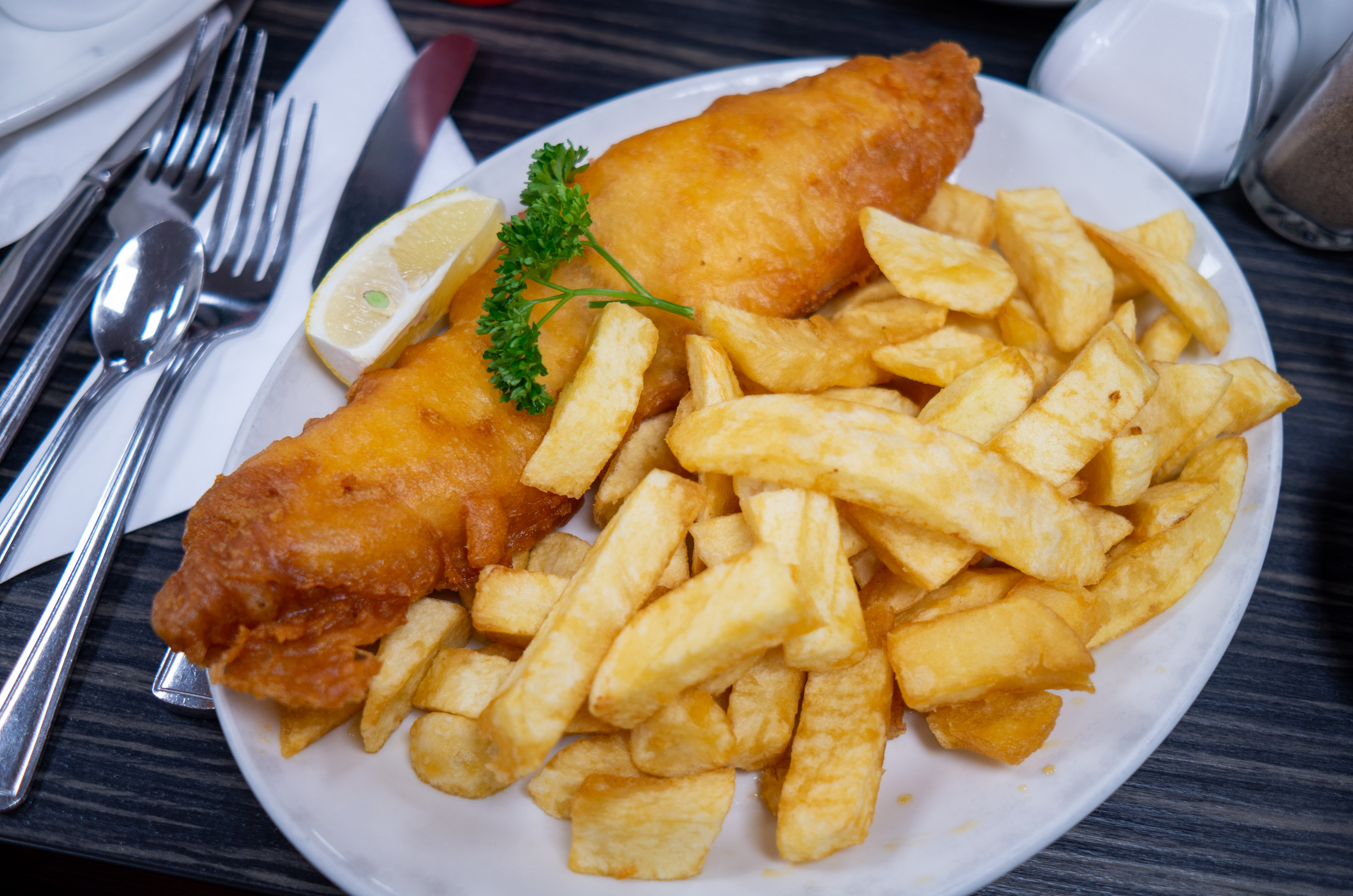Few dishes conjure a sense of place quite like fish and chips. Served wrapped in paper, generally with a generous sprinkling of salt and vinegar, this unassuming pairing of battered fish and deep-fried potatoes has become one of Britain’s most enduring culinary symbols. Yet its roots lie in immigrant traditions, industrial development and the shifting tides of social change.
Fried fish was introduced to Britain by Jewish immigrants from Spain and Portugal as early as the 17th century. Coated in flour and fried in oil, it was a method adapted for the Sabbath, when cooking was not permitted. Chips, meanwhile, are often claimed by the French or Belgians, who were slicing and frying potatoes long before the idea reached British shores. It was in the mid-19th century, however, that these two separate traditions met in the working-class neighbourhoods of London and Lancashire, where the abundance of cheap fish from expanding rail and trawl networks and plentiful potatoes made the dish both practical and popular.
The first fish and chip shop is often credited to Joseph Malin, who opened his London premises in the 1860s. Others in northern towns like Oldham and Mossley lay claim to similar ventures around the same time. Whatever the precise origin, by the turn of the 20th century, fish and chips had become a staple of British life – a nourishing, inexpensive meal eaten by mill workers, schoolchildren and soldiers alike. During both World Wars, it was one of the few foods never rationed, so closely was it tied to national morale.
Though the core elements remain familiar – a fillet of white fish, most often cod or haddock, dipped in batter and fried, served alongside thick-cut chips – the details have long been subject to regional debate. In the North, the batter tends to be crispier, the chips meatier, and the condiments more varied, including mushy peas and gravy. In the South, one is more likely to find salt and malt vinegar taking centre stage. Scotland has its own variations, often using haddock and occasionally serving the fish in a roll. Innovations in preparation, such as beer batter, panko coatings or oven-baking, have allowed for creative reinvention in recent years.
While fish and chips are not a tradition in Cyprus per se, they have found their way onto menus in British pubs and seaside restaurants around the island. Some establishments use local ingredients – such as fresh Mediterranean seabass or sea bream – offering a subtle nod to place while maintaining the essential spirit of the original.







Click here to change your cookie preferences